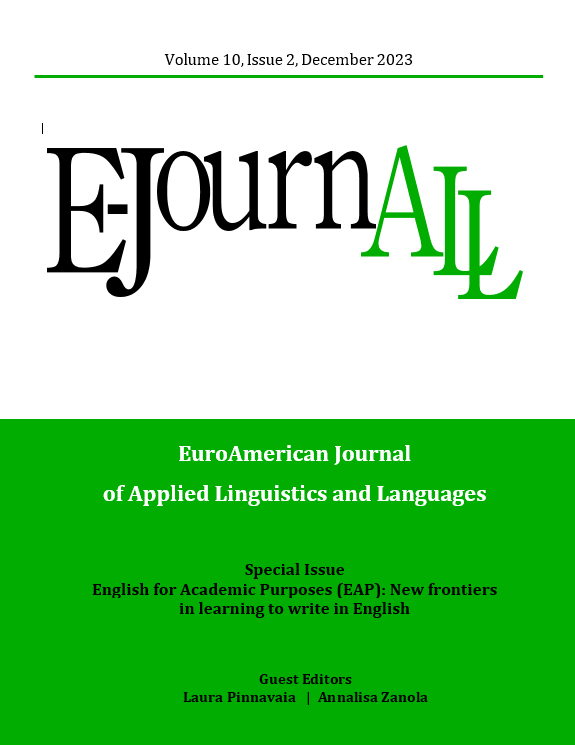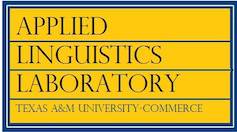EALP textbooks and the challenges of legal English education
DOI:
https://doi.org/10.21283/2376905X.1.10.2.2768Keywords:
EALP, textbooks, specialised language, legal language, educationAbstract
Over the last thirty years English for Academic Purposes (EAP) has expanded, cutting across the domains of specialised discourse, and has shifted its focus to meet the needs of large numbers of non-native speaking students at the university level. In this regard, English for Academic Legal Purposes (EALP) can be defined as the teaching and learning of legal English as an ESP subject that includes the academic dimensions of EAP. This paper investigates how EALP textbooks has responded to the challenges of law school education. Reflecting on the pedagogic contributions of Carrick and Dunn (1985), Candlin, Bhatia, and Jensen (2002), and Prinsloo (2015), this paper begins diachronically with a sample of EALP-type textbooks from the point where Prinsloo completed his analysis. Drawing on these reviews, this paper attempts to provide some insights into the development of EALP-type textbooks and their response to the challenges of legal English education.
References
Alqahtani, Amjed (2011). An investigation into the language needs of Saudi students studying in British Postgraduate programmes and the cultural differences impacting on them. Thesis for the degree of Doctor of Philosophy. University of Southampton. Retrieved from Binder1.pdf (soton.ac.uk).
Anthony, Laurence (2018). Introducing language for specific purposes. Routledge.
Balcom, Patsy & Kozar, Seana (1994). An ESP speaking course for international graduate students. TESL Canada Journal, 12(1), 58–68.
Benaquisto, Lucia (2008). Axial coding. In Lisa M. Given (Ed.). The SAGE Encyclopedia ofQualitative Research Methods (pp. 51-52). SAGE.
Belcher, Diane (2009). English for specific purposes in theory and practice. University of Michigan Press ELT.
Bhatia, Vijay K. (1989). Legislative writing: A case of neglect in EA/OLP courses. English for Specific Purposes 8, 223-238. https://doi.org/10.1016/0889-4906(89)90014-8
Bhatia, Vijay K. (1993). Analysing genre: language use in professional settings. Longman.
Bhatia, Vijay K. (2008). Genre analysis, ESP and professional practice. English for Specific Purposes 27, 161-174. https://doi.org/10.1016/j.esp.2007.07.005
Candlin Christopher, Bhatia, Vijay K., & Jensen, Christian H. (2002). Developing legal writing materials for English second language learners: problems and perspectives. English for Specific Purposes 21(4), 299-320. https://doi.org/10.1016/S0889-4906(01)00029-1
Carrick, Kathleen & Dunn, Donald J. (1985). Legal writing: an evaluation of the textbook literature. New York Law School Law Review 30, 645-675.
Coffey, Bernard (1984). ESP – English for specific purposes. Language Teaching 17, 2-16. https://doi.org/10.1017/S0261444800010405
Creswell, John D. (2014). Research design: qualitative, quantitative, and mixed methods approaches. SAGE publications.
Danet, Brenda (1980). Language in the legal process. Law & Society Review 14(3), 445-564. https://doi.org/10.2307/3053192
Dolin, Jason M. (2007). Opportunity lost: how law school disappoints law students, the public, and the legal profession. California Western Law Review 44, 219-255. Available at: https://scholarlycommons.law.cwsl.edu/cwlr/vol44/iss1/6
Dörnyei, Zoltán (2007). Research methods in applied linguistics. Oxford University Press.
Douglas, Heather (2022). Sampling techniques for qualitative research. In Islam M. Rezaul, Ahmed Khan Niaz & Baikady Rajendra (Eds.). Principles of Research Methodology (pp. 415-426). Springer.
Dudley-Evans, Tony, & St John, Maggie J. (1998). Developments in English for specific purposes: a multi-disciplinary approach. Cambridge University Press.
Eldeman, Diane (2010). Making a case for legal writing instruction worldwide. Jurisprudencija/Jurisprudence 1(119), 111-123.
Flowerdew, John (2016). English for specific academic purposes (ESAP) writing: making the case. Writing & Pedagogy 8(1), 5-32. https://doi.org/10.1558/wap.v8i1.30051
Flowerdew John, & Peacock, Matthew (2001). Research perspectives on English for academic purposes. Cambridge University Press.
Gerkman, Alli, & Cornett, Logan (2017). Foundations for practice: the whole lawyer and the character quotient. IAALS, the Institute for the Advancement of the American Legal System, 1-41.
Gibbons, John (1999). Language and the law. In Alan Davies & Catherine Elder (Eds.). The handbook of applied linguistics (pp. 286-303). Blackwell Publishing.
Gibbons, John P. (2014). Language and the law. Routledge.
Graves, Kathleen (2000). Designing language courses. A guide for teachers. Heinle & Heinle.
Halliday, Michael A.K. (1993). Towards a language-based theory of learning. Linguistics and Education 5, 93-116. https://doi.org/10.1016/0898-5898(93)90026-7
Halliday, Michael A.K. (2006). Linguistic studies of text and discourse (Vol. 2). A&C Black.
Hess, Gerald F. (2002). Heads and hearts: the teaching and learning environment in Law School. Journal of Legal Education 52, 75-111. https://www.jstor.org/stable/42893745
Hyland, Ken (2006). English for academic purposes: an advanced resource book. Routledge.
Hyland, Ken (2009). Academic discourse. Continuum.
Hyland, Ken & Hamp-Lyons, Liz (2002). EAP: issues and directions. Journal of English for Academic Purposes 1(1), 1-12. https://doi.org/10.1016/S1475-1585(02)00002-4
Johns, Ann M. (1997). Text, role and context: developing academic literacies. Cambridge University Press.
Johns, Ann M. (2013). The history of English for specific purposes research. In Brian Paltridge & Sue Starfield (Eds.). The handbook of English for specific purposes (pp. 5-30). Wiley-Blackwell.
Johnson, Nick (2020). The clinical legal education handbook. University of London Press.
Kennedy, Duncan (2004). Legal education and the reproduction of hierarchy: a polemic against the system. New York University Press.
Lichtman, Marilyn (2013). Qualitative research in education: A user’s guide. SAGE publications.
Linden, Thomas & Johnson, Nick (2020). The clinical legal education handbook. University of London Press.
Prinsloo, Christian (2015). English for academic legal purposes: textbook typologies that inform legal English pedagogy. International Journal of Legal English 3(1), 4-27.
Shahab, Sara, Nasser, Rashidi, Firooz, Sadighi & Mortaza, Yamini (2020). A textual discourse analysis of introductions in textbooks of humanities and basic sciences. Canadian Journal of Applied Linguistics 23, 137-168. https://doi.org/10.37213/cjal.2020.28750
Shenton, Andrew K. (2004). Strategies for ensuring trustworthiness in qualitative research projects. Education for Information 22, 63–75.
Sullivan, William M., Colby, Anne, Wegner, Judith W., Bond, Lloyd & Shulman, Lee L. (2007). Educating lawyers. Preparation of the profession of law. John Wiley & Sons.
Stuckey, Roy T. (2007). Best practices for legal education. Carolina (US): Clinical Legal Education Association.
Swales, John (2004). Research genres: explorations and applications. Cambridge University Press.
Teddlie, Charles & Yu, Fen (2007). Mixed method sampling: a typology with examples. Journal of Mixed Methods Research 1(7), 77-100. https://doi.org/10.1177/1558689806292430
Tiersma, Peter (2006). Some myths about legal language. Law, Culture and the Humanities 2, 29-50.
Trask, Robert L. (2007). Language and linguistics: the key concepts. Routledge.
Venturi, Giulia (2010). Legal language and legal knowledge management applications. In Enrico Francesconi, Simonetta Montemagni, Wim Peters & Daniela Tiscornia (Eds.) Semantic processing of legal texts: where the language of law meets the law of language (pp. 3-26). Springer-Verlag.
Williams, Christopher (2014). The future of ESP studies: building on success, exploring new paths, avoiding pitfalls. ASp 66. Retrieved from http://journals.openedition.org/asp/4616.
Downloads
Published
How to Cite
Issue
Section
Categories
License
Copyright (c) 2023 Giulia Adriana Pennisi

This work is licensed under a Creative Commons Attribution 4.0 International License.


